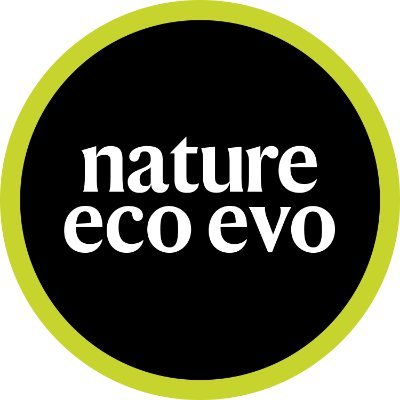
Dan Hending
@DanHending
Followers
395
Following
1K
Media
112
Statuses
424
I am a Research Fellow at the Nature-based Solutions Initiative, University of Oxford, UK. #First-gen.
Oxford, England
Joined October 2018
(1/5) My new paper “Cryptic Species Conservation: a Review” is now available fully open access in Biological Reviews! So excited to see this one published! https://t.co/nyNegdHYF0
onlinelibrary.wiley.com
Cryptic species are groups of two or more taxa that were previously classified as single nominal species. Being almost morphologically indistinguishable, cryptic species have historically been hard...
1
17
46
However, not all acoustic indices follow the same trend, meaning that such metrics need to be applied and interpreted with caution when measuring species biodiversity via ecoacoustics. (3/3)
0
0
0
Our study shows that forest fragmentation and edge-effects can have profound impacts on the soundscape, which is indicative of reduced biodiversity. These results align with biodiversity data from traditional transect data. (2/3)
1
0
0
Our new paper "Impact of Forest Fragmentation and Associated Edge Effects on Tropical Forest Biodiversity in North West Madagascar, Assessed via Ecoacoustics" now published in open access in @AnimalConserv (1/3) https://t.co/VsDa32Mjx0
@BASElabBristol @OxfordBiology
zslpublications.onlinelibrary.wiley.com
Deforestation in the tropics is a major threat to forest-specialist animals, many of which are already threatened with extinction. We assessed how forest fragmentation and its associated edge-effec...
1
0
0
View over Gloucestershire from the border of Oxfordshire. England's green and pleasant summer landscape 🏴 🌳
0
0
0
🦏 Cutting the horns off rhinos results in a drastic reduction in poaching of these endangered animals. Read about the study, published in @ScienceMagazine here👇 https://t.co/p8S8pUbT7z 📸T. Kuiper
0
4
16
https://t.co/152HS6gbJb Huge new @GEB_macro paper looking at acoustic monitoring efforts around the world. The who, what, where, when, and how of passive acoustic monitoring. With >100 authors! "Worldwide soundscapes: a synthesis of passive acoustic monitoring across realms"
onlinelibrary.wiley.com
Aim The urgency for remote, reliable and scalable biodiversity monitoring amidst mounting human pressures on ecosystems has sparked worldwide interest in Passive Acoustic Monitoring (PAM), which...
1
8
24
New paper "Worldwide Soundscapes: A Synthesis of Passive Acoustic Monitoring Across Realms" https://t.co/n4zmqnCA4P
onlinelibrary.wiley.com
Aim The urgency for remote, reliable and scalable biodiversity monitoring amidst mounting human pressures on ecosystems has sparked worldwide interest in Passive Acoustic Monitoring (PAM), which...
0
1
2
🐘 African elephants plan their journeys carefully, preferring to avoid steep slopes and rough terrain and favouring food-rich environments 🐘 So if you too prefer a gentle walk with a snack break, you're in good company. New with @idiv and @ste_kenya 👇 https://t.co/vOhTH6pbWi
0
3
12
Join us in exploring the hidden world of cryptic species – often-overlooked groups which can be at serious risk of extinction – as @DanHending tells us why we should care about them ⬇️ https://t.co/MW0LtVNovM 📷c. 2013 Stephen D. Nash/IUCN SSC Primate Specialist Group
0
2
6
News item on my paper, "Cryptic Species Conservation: A Review" just published in Biological Reviews: https://t.co/Pz58mcPjaP
@OxfordBiology
biology.ox.ac.uk
0
0
3
New volume of Biological Reviews just published today, featuring my paper "Cryptic Species Conservation: A Review" as the cover image! https://t.co/pvy9xKfSlN
onlinelibrary.wiley.com
Click on the article title to read more.
1
0
0
New paper: Facilitated Forest Restoration Using Pioneer Seed Dispersers in Madagascar: The Example of Microcebus spp. 🌳🌱🥭🇲🇬 https://t.co/wwo9jSSCCb
mdpi.com
The concept of “facilitated restoration” aims at native biodiversity reinstatement with the help of animal seed dispersers attracted by fruiting trees.
0
0
1
New paper on Microcebus (mouse lemur) taxonomy published in @NatureEcoEvo, led by @TobiasvanElst @Dmnk4Lemurs @GabiSgarlata and Jordi Salmona. https://t.co/PNTTwRN3Bl
nature.com
Nature Ecology & Evolution - A spatial taxonomic framework integrating genomic, morphological, ecological, life history and acoustic data is used to clarify the cryptic evolution of the...
0
2
5
Mouse lemur taxonomy is complicated and controversial. @TobiasvanElst et al leverage an integrative framework to clarify cryptic evolution within the complex that could be used on other clades. (OA) https://t.co/lCnyQLP9N9
nature.com
Nature Ecology & Evolution - A spatial taxonomic framework integrating genomic, morphological, ecological, life history and acoustic data is used to clarify the cryptic evolution of the...
0
4
7
(1/5) My new paper “Cryptic Species Conservation: a Review” is now available fully open access in Biological Reviews! So excited to see this one published! https://t.co/nyNegdHYF0
onlinelibrary.wiley.com
Cryptic species are groups of two or more taxa that were previously classified as single nominal species. Being almost morphologically indistinguishable, cryptic species have historically been hard...
1
17
46
Using range maps to improve species distribution models: new method using stacked generalization published in Global Ecology & Biogeography (@GEB_macro) Paper led by Julian Oeser --> https://t.co/51D3rWq22N
#SDM #biodiversity #models @BiogeoBerlin @ZurellLab @mfnberlin
onlinelibrary.wiley.com
Aim Species distribution models (SDMs) are powerful tools for assessing suitable habitats across large areas and at fine spatial resolution. Yet, the usefulness of SDMs for mapping species' realise...
1
28
91
Don't miss this review from Oxford Biology research fellow Dan on 'Cryptic Species Conservation'.
(1/5) My new paper “Cryptic Species Conservation: a Review” is now available fully open access in Biological Reviews! So excited to see this one published! https://t.co/nyNegdHYF0
0
1
2
(5/5) Shout-out to @temiller17 and Tom Mulder for providing helpful comments on the manuscript, Stephen Nash for (once again!) allowing me to use his illustrations, and @L_Santini_Eco and Victor Cazalis for allowing me to use a version of their figure (Cazalis et al. 2022 TREE).
0
0
1













